Inventions
Helicopter for Kids
I want one of these in my backyard! From the Lewiston Morning Tribune, Nov 9, 1968: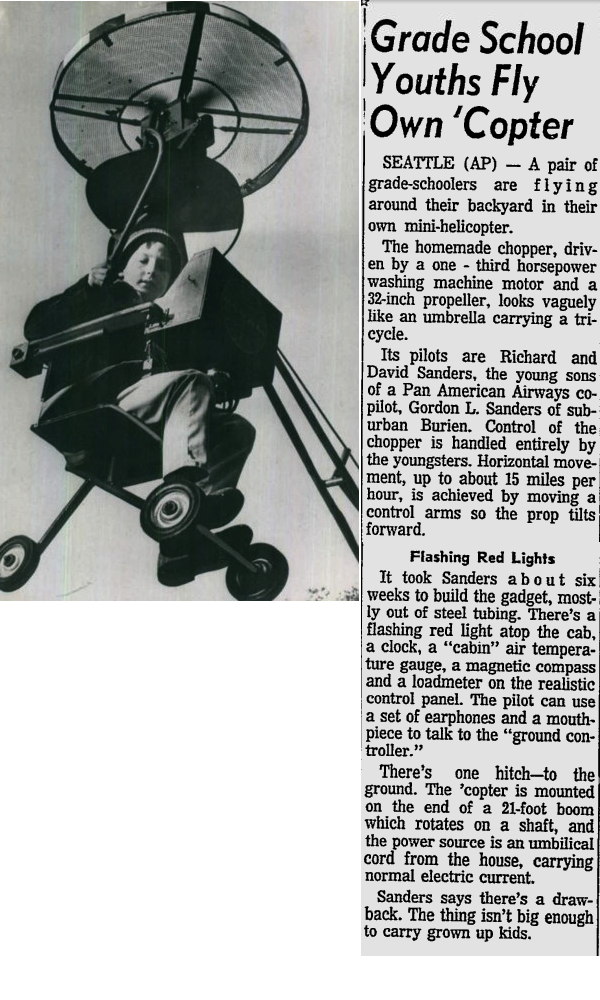
Posted By: Alex - Wed Aug 29, 2012 -
Comments (7)
Category: Inventions
Self-Gassing Device

Kind of like having an octopus attached to your head. From Popular Science, May 1938.
Posted By: Alex - Sun Aug 19, 2012 -
Comments (6)
Category: Inventions, Medicine
The Inflatoplane
Developed by Goodyear in the 1950s, the Inflatoplane could fit in the trunk of a car, and then be inflated to full size in 10 minutes. The idea was that the air force could drop inflatoplanes to pilots stranded in enemy territory, allowing them to fly themselves to safety. But the project was eventually abandoned because of a series of accidents, and the military's concern that the plane could too easily be shot down. Link: bendbulletin.com
Posted By: Alex - Wed Aug 15, 2012 -
Comments (4)
Category: Inventions, Military, Air Travel and Airlines
The Korean Nine-Person Shovel
Westerners traveling to Korea in the late nineteenth century were puzzled by this shovel, which they frequently saw in use on Korean farms. It required between three to nine people to operate, but it seemed to shovel dirt no faster or better than a western-style, one-person shovel.However, the westerners may have been mistaken about the lack of efficiency of the Korean shovel. An article in Esquire (June 21, 2010) by John Richardson offers this piece of info:

via Flickr


via wikipedia
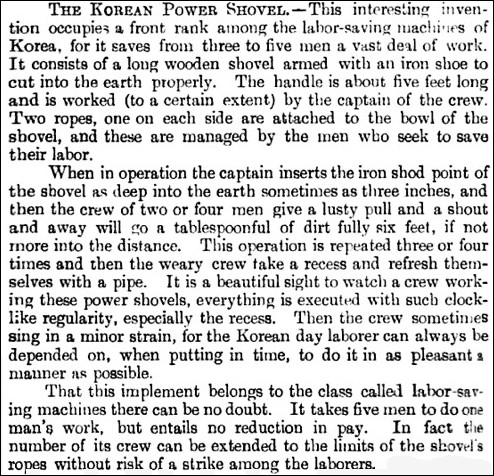
Posted By: Alex - Thu Jun 28, 2012 -
Comments (4)
Category: Inventions
The Flying Platform
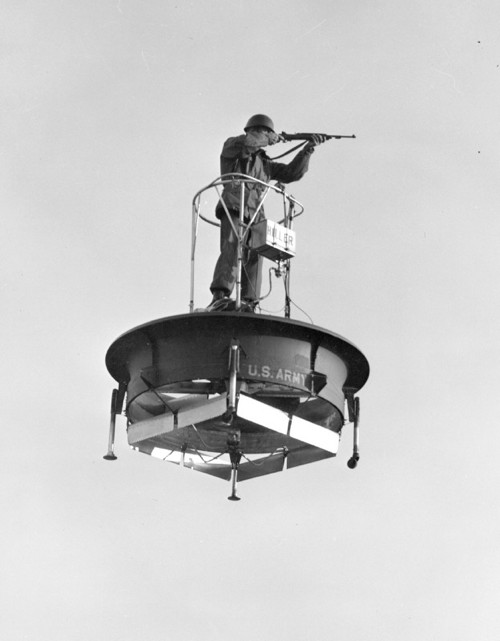
According to the Air and Space Museum:
Unfortunately, the flying platform was plagued by engineering problems. Otherwise, we'd probably all be floating around cities in these today. More info here
Posted By: Alex - Mon May 21, 2012 -
Comments (6)
Category: Inventions, Military
A Hat To Protect the Wearer from Falling Bricks

From The Strand magazine, 1895.
Posted By: Alex - Thu May 17, 2012 -
Comments (3)
Category: Inventions, Headgear
The Husband Detector
Dr. Gordon Volkenant seems like he was quite the character. In 1947, he invented a gadget he called the "husband detector." It was basically a motion detector, designed to help wives catch their husbands who were trying to sneak unheard into the house after a late night at the bar. When it sensed someone coming through the door, it set off a loud siren. link: Pittsburgh Press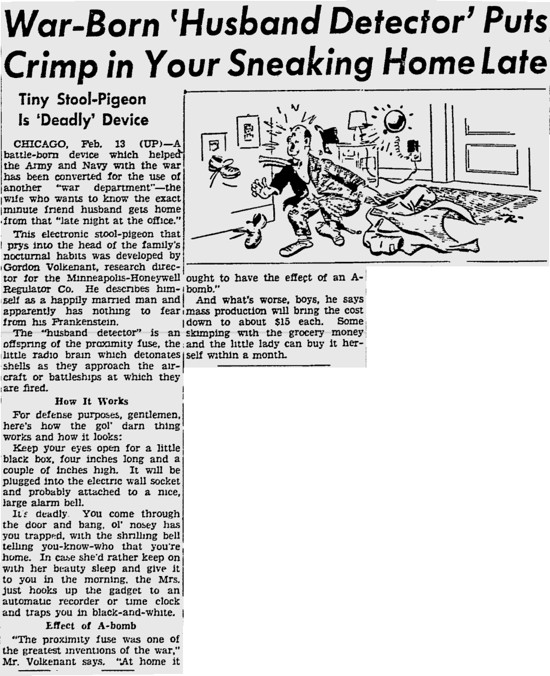
Volkenant promptly became the first husband to be caught by his own device, when it rang the alarm as he tried to sneak into his house at 3 a.m. link: Washington Reporter
And based on the look of him, I'm guessing he wasn't just at the bar until 3 a.m. Here he is in 1948 demonstrating another of his gadgets, which he called an "electronic humidistat." He claimed it could detect hosiery defects in nylon stockings when he waved it up and down a woman's leg. It looks a lot like a regular lightbulb to me. I'm sure he found it necessary to test on many women.

Posted By: Alex - Wed Apr 25, 2012 -
Comments (7)
Category: Inventions, Lies, Dishonesty and Cheating, Husbands
How to turn your toaster into a hair dryer
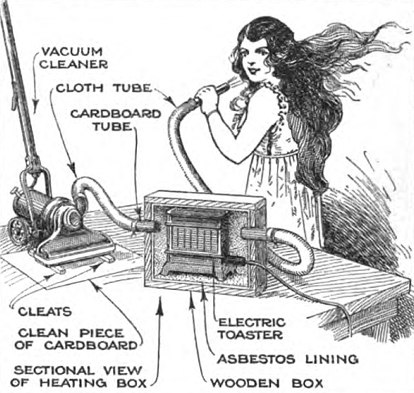
(Popular Mechanics via This Circular Parade)
Posted By: Alex - Tue Apr 17, 2012 -
Comments (6)
Category: Inventions
Rube Goldberg Contraption Uncorks Bottle and Pours Wine
These should be standard in every dining room.
Posted By: Alex - Mon Apr 16, 2012 -
Comments (5)
Category: Inventions, Rube Goldberg Devices
Robotic Anti-Snoring Bear Pillow
Robotic bear will reach out and stroke your face so gently as you sleep.
Posted By: Alex - Wed Apr 04, 2012 -
Comments (3)
Category: Inventions, Chindogu, Sleep and Dreams

| Who We Are |
|---|
| Alex Boese Alex is the creator and curator of the Museum of Hoaxes. He's also the author of various weird, non-fiction, science-themed books such as Elephants on Acid and Psychedelic Apes. Paul Di Filippo Paul has been paid to put weird ideas into fictional form for over thirty years, in his career as a noted science fiction writer. He has recently begun blogging on many curious topics with three fellow writers at The Inferior 4+1. Contact Us |




